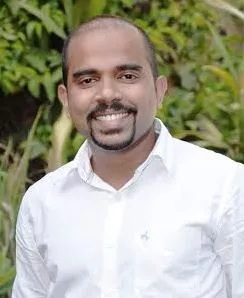Three Seminal Works in the Social Sector: A Beginners Guide for Social Sector Aspirants
Bottom of the pyramid, social inequalities, marginalization, socio-economic growth, Millennium Development Goals, etc. are buzz words we hear often in the social sector. However, how deeply do we understand them?
With shallow knowledge, one often ends up making highly incorrect assumptions. For instance, one would assume that a person who is malnourished due to poor income levels would be expected to save any extra money towards food. So if his income were to increase in some way, he would immediately buy more food with it, and become healthier. However in reality, he might instead spend that money to buy branded tea, various FMCG sachets, cellphone recharges, etc.
With limited understanding, one also ends up looking at socio economics in a highly biased manner. It is a common assumption that India performs way better than its neighbours Pakistan and Bangladesh, in all areas of social development. Data, which is truly unbiased when raw, and research seems to suggest that this is not the case. There are areas where we can learn from these neighbours.
There is no substitute to gaining an in depth understanding than getting your hands dirty and your soles thin. One has to travel and meet people, work on grass root issues, and spend time understanding the nuances of socio-economic development. However, these hands on experiences should also be duly complemented with appropriate reading – leveraging the knowledge of people who have done immense research in these areas.
Here are three must reads for any social sector professional. These priceless resources from stellar economists can help you gain an in depth understanding of social issues and social development. Together (though not individually) these books also cover the spectrum between capitalism and socialism – giving a politically and economically unbiased view towards poverty.

The Fortune at the Bottom of the Pyramid – C K Prahlad
Although bottom of the pyramid was a term in use as early as 1932 (US President FDR is recorded to have used this for the first time in a radio address), a standard definition to this term was first given and used in a business context by Coimbatore Krishnarao Prahalad (C K Prahlad) in the article “The Fortune at the Bottom of the Pyramid” in the business journal Business+Strategy, along with his co-author Stuart L. Hart.
C K Prahlad went on to expand the article into a book, titled “The Fortune at the Bottom of the Pyramid: Eradicating Poverty Through Profits” covering case studies across the world on how companies have created profitable businesses serving the poor. He revolutionized the image of the socio economically marginalized – from that of a victim to a stakeholder; a value demanding, entrepreneurial stakeholder.
A professor of Corporate Strategy at University of Michigan, C K Prahlad also argues how multi nationals can significantly benefit their businesses by focusing on poverty reduction.
This book is a must read for anyone looking at taking a deep dive into the social sector and understanding the “bottom of the pyramid” better.
For readers interested in learning juicy “researcher debate” on bottom of the pyramid, one should also read Prahlad’s multi page response to Aneel Kenani, another Professor at Michigan, who countered C K Prahald’s theory, in a paper in 2007, arguing that multi nationals have little to gain from focusing on the bottom of the pyramid as the relevant market is very small. Karnani positioned the poor as producers, instead of consumers, in his paper – extending the debate among researchers on the bottom of the pyramid.
Poor Economics: A Radical Rethinking of the Way to Fight Global Poverty – Abhijit Banerjee and Esther Duflo
Winning the Financial Times and Goldman Sachs Business Book of the Year award in 2011, this book by MIT economics professors Banerjee and Duflo is a masterpiece on evidence based approach to tackling poverty. Abhijit Banerjee is the founder of Abdul Latif Jameel Poverty Action Lab at MIT.

“Generally, it is clear that things that make life less boring are a priority for the poor – a television or a little bit of something special to eat – like a sugary cup of tea”, says the book. The book talks about how people’s expenditure on festivals is highly correlated with access to television or radio. For instance, among the poor in Udaipur, where almost no one had a television, they spend about 14% of their budget on religious festivals whereas in Nicargua with 56% television penetration among the poor, festival expenditure is negligible.With such evidence based analysis, Abhijit Banerjee and Esther Duflo helps us understand how the poor think and how we can be a part of solving developmental problems centred around poverty.
Poor Economics is a gem of a book for social sector professionals who are keen on empirical analysis and hate generalizations – because guess what, these authors hate them too.
An Uncertain Glory: India and Its Contradictions – Amartya Sen and Jean Drèze
A Nobel laureate and Bharat Ratna awardee, Amartya Sen, presents an eye opening perspective to social inequalities and development in India, in his book “An Uncertain Glory: India and Its Contradictions”.
The book breaks almost every assumption one has on social development in India – by comparing India’s growth with other south Asian countries, BRIC nations, and bringing out startling facts. The data makes one look beyond nationalistic views and learn from our neighbours, including Pakistan, on where we lacked and where we succeeded, across various tenets of social development.
India adopting a firmly democratic political system soon after independence has helped improve participatory governance. This has helped avoid famines that have occurred often in autocratic countries like China. However the book argues that the very same consensus driven democratic process has also failed at arresting poverty or providing sanitation, when compared to China. The book doesn’t argue against a democratic government but points out the inefficiencies in a weak democratic process, where a consensus driven process is focusing more on the process than the problem or the solution.
With these insights into social development in India, this book provides the reader with a renewed understanding of India and her social problems. More importantly, the book explains how GDP growth is not the end to all social problems – you learn that India, at one of the fastest GDP growth rate, has 40% underweight children as opposed to 25% in sub-saharan Africa.
About the author:

Arun Asok is a social sector professional currently heading a business unit for a highly innovative social enterprise. With a keen interest in inclusive businesses, post his graduation from IIM A, Arun worked extensively in the impact investment space – investing and managing companies across sectors such as low cost education, affordable healthcare, financial inclusion, etc.Disclaimer: The views and opinions expressed in this article are those of the author and do not necessarily reflect the views of YourStory.







